Suborder †Ornithopoda Scientific name Hadrosaurus Rank Genus | Phylum Chordata Family †Hadrosauridae Higher classification Hadrosaurinae | |
 | ||
Similar Dinosaur, Hadrosaurid, Saurolophus, Edmontosaurus, Ornithopod | ||
Drawn to dinosaurs hadrosaurus drawing time lapse
Hadrosaurus (/ˌhædrəˈsɔːrəs/; from Greek ἁδρός, hadros, meaning "bulky" or "large", and σαῦρος, sauros, meaning "lizard") is a valid genus of hadrosaurid dinosaur. The only known skeleton was discovered in 1858, representing the first dinosaur species known from more than isolated teeth to be identified in North America. In 1868, it became the first ever mounted dinosaur skeleton. Hadrosaurus foulkii is the only species in this genus and has been the official state dinosaur of New Jersey, United States since 1991.
Contents
- Drawn to dinosaurs hadrosaurus drawing time lapse
- Discovery and historyEdit
- ClassificationEdit
- PaleoecologyEdit
- References

H. foulkii is known from a single specimen consisting of much of the skeleton and parts of the skull. The specimen was collected from the Woodbury Formation in New Jersey, USA. Using radio-isotope dating of bivalve shells from the same formation, the sedimentary rocks where the Hadrosaurus fossil was found were formed at some time between 80.5 and 78.5 million years ago.
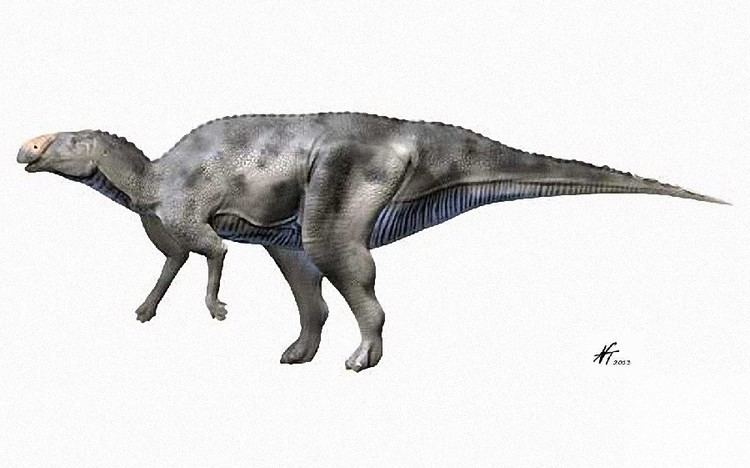
Discovery and historyEdit
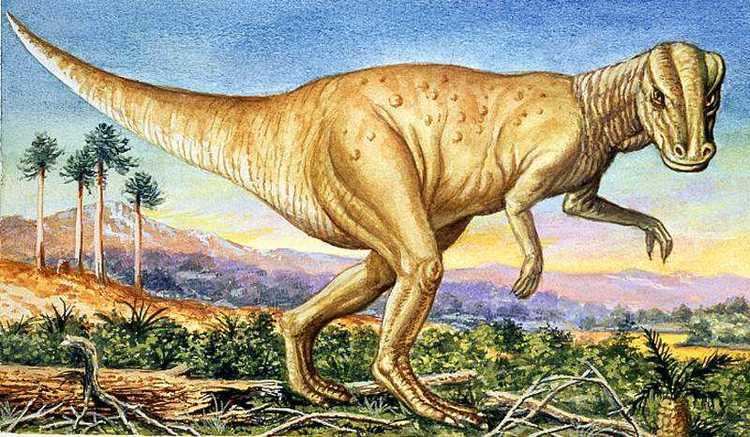
In 1838, John Estaugh Hopkins was digging in a marl pit (on a small tributary of the Cooper River in Haddonfield, New Jersey, and part of the Campanian-age Woodbury Formation) when he uncovered large bones, putting them on display at his home, also in Haddonfield. In 1858, these bones sparked the interest of a visitor, William Parker Foulke. The skeleton was dug out from the marl pit in 1858 by Foulke. The excavation site, known as the Hadrosaurus foulkii Leidy site, is now a National Historic Landmark. Foulke contacted paleontologist Joseph Leidy, and together they recovered an almost complete set of limbs, along with a pelvis, several part of the feet, 28 vertebrae (including 18 from the tail), eight teeth and two small parts of the jaw. Foulke and Leidy studied the fossils together, and in 1858, Leidy formally described and named Hadrosaurus foulkii in honor of his collaborator.
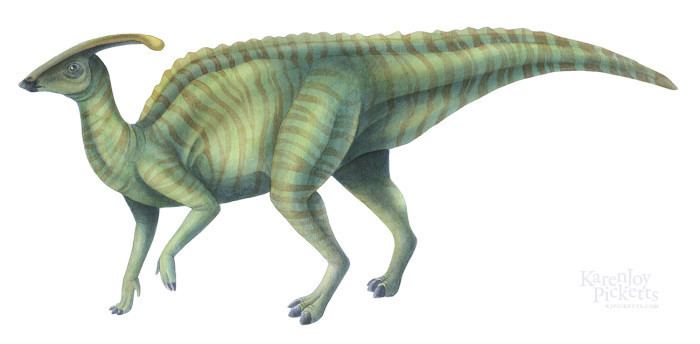
Leidy recognized that these bones were from a dinosaur by their similarity to those of Iguanodon, discovered in England some decades before, but the skeleton of Hadrosaurus was far more complete. Leidy's monograph Cretaceous Reptiles of the United States, describing Hadrosaurus more completely and with illustrations, was written in 1860, but the American Civil War delayed its publication until 1865.
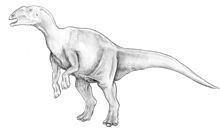
Leidy reconstructed Hadrosaurus as a biped, in contrast to the view at the time that such dinosaurs were quadrupedal. The entire skeleton was completely assembled in 1868 by a team including English sculptor and naturalist Benjamin Waterhouse Hawkins and was put on display at Philadelphia Academy of Natural Sciences. It was the first-ever mounted dinosaur skeleton. The skeleton is usually kept 'behind-the-scenes' in the Academy's collections. However, from November 22, 2008 until April 19, 2009, a fully assembled cast of the skeleton and an exhibit about the science and culture surrounding the dinosaur's discovery was open to the public.
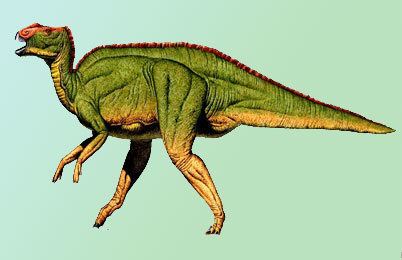
Hadrosaurus was named the state fossil of New Jersey, designated in 1994. It is one of the most celebrated dinosaurs ever, and is of great historic importance.

When the skeleton was first assembled, it was displayed with a plaster skull sculpted by Hawkins. Many other artists have recreated Hadrosaurus with skulls from other, related species such as Gryposaurus and Brachylophosaurus. A statue of Hadrosaurus, sculpted by Haddonfield resident John Giannotti, now stands in the center of the town of Haddonfield, commemorating its discovery there.
ClassificationEdit
Despite the fact that the family Hadrosauridae has Hadrosaurus as its type genus, the skeleton lacks a skull and was long viewed as too incomplete to compare to other hadrosaurs for classification purposes, leading most scientists to consider it a nomen dubium, or dubious name. However, a re-evaluation of the fossil material in 2011 noted several distinct characteristics of the skeleton that could allow the genus Hadrosaurus and species H. foulkii to remain in use as valid taxa.
Hadrosaurus has also traditionally served as the basis for a large subfamily called Hadrosaurinae, which was seen as a group of largely crestless group of hadrosaurs related to the crested subfamily Lambeosaurinae. However, the changing view of Hadrosaurus classification in relation to other hadrosaurs has led some scientists to rename these subfamilies. In a 2008 study, Hadrosaurus was found to be more primitive than either lambeosaurines or other "hadrosaurines", and not a particularly close relative of classic "hadrosaurines" such as Edmontosaurus and Saurolophus. As a result of this, the name Hadrosaurinae was restricted to Hadrosaurus alone, and the subfamily comprising the traditional "hadrosaurines" was renamed the Saurolophinae.
Below is a simplified cladogram recovered by Ramírez-Velasco et al. in 2012 in their description of Huehuecanauhtlus. This topology was recovered using an extensive sampling of 60 hadrosauroid species, and two outgroup taxa, which were scored based on 287 morphological traits, and included data from two recent redescriptions of Hadrosaurus by Prieto-Márquez et al. (2006) and Prieto-Márquez (2011).
However, the latest phylogeny of the Hadrosauroidea indicates Hadrosaurus is definitely placed within the monophyletic group including all nonlambeosaurine hadrosaurids. Therefore, the traditional Hadrosaurinae should be still valid for designating all non-lambeosaurine hadrosaurids.
PaleoecologyEdit
The holotype of Hadrosaurus was found in marine sediments, which suggests the skeleton was transported by a river and then deposited in the Cretaceous sea. The Hadrosaurus remains all persist to the Woodbury Formation.
